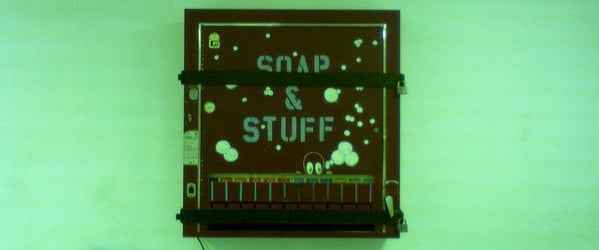If you have worked in a lab before, you probably think you are prepared to work anywhere. You’ve done the safety classes, know how to store the chemicals, even know how to work the chemical shower. Unfortunately, that doesn’t fully prepare you for greenhouse work. Greenhouses are a different kind of greenery-filled animal entirely, and should be treated that way. Have no fear though, this guide will start you down the right path.
A Different Kind of Contamination
In the lab, contamination is a constant worry. That is the case in the greenhouse as well. Each greenhouse can have many different plants, with different diseases and pests as well. Because of this, each should be treated as a separate environment.
If you are working in multiple greenhouse rooms, make sure you are aware that you can easily track diseases and pests between them. Some diseases, such as different fungi, can be spread by tracking spores on clothing or shoes. The easiest way to deal with this is to simply not go into multiple greenhouses on the same day, but that may not be practical if you are working with multiple species or environments.
I generally keep track of each greenhouse, and if there is a pest in one greenhouse and not another, I make sure to enter the contaminated greenhouse last. Once I have set foot in the infected greenhouse I don’t enter another one until the next day.
Follow the Rules
Most greenhouses will have strict rules, like the order of entry outlined above, that need to be followed. Places like common potting rooms can quickly spread diseases and pests if not kept tidy and maintained. Make sure you know the rules before getting to work. The rules are almost always easy, but you don’t want to be that person contaminating the whole complex.
Speaking of rules, greenhouses are usually monitored under government working standards. What this means is that any chemicals or substances applied need to be monitored and tracked. This means you usually can’t apply your own pesticides or herbicides. Any registered chemical must be applied by trained and registered staff. Sometimes this person is you, and sometimes it is the trained staff of greenhouse/facility managers. Just be aware that bringing in your own pesticide is usually not allowed. These rules protect you and allow for multiple users of the greenhouse as a shared resource/space.
The greenhouse staff are also the people you want to talk to if you need to set up greenhouse experiments involving pests. Sometimes your study system is the very pest others are trying to prevent. Most greenhouse staff are prepared for this and can help you set up experiments without annoying the neighbors.
This Isn’t the Great Outdoors
Once you know the rules and regulations, it is time to get down to business and start your indoor garden! Where most people go wrong here, is they just throw a seed or seedling in a pot, water it, and then assume it will grow into a nice beautiful plant. While this can be true, for the most part that doesn’t actually happen. It’s important to realize that no-matter how good your greenhouse is, it isn’t the plant’s natural environment. The soil doesn’t have the same microbes, the lights aren’t the same intensity, there isn’t the same soil depth etc. There are dozens if not hundreds of ways greenhouses aren’t the same as the plants’ normal environment.
The good news is unless you are working on something truly unique, there are probably people out there who have grown your type of plant before. If you are truly lucky, someone else in your lab or at your institution grows it. That is, without a doubt, your best resource. Ask them to take you through all the steps they use to get quality plants out of the same greenhouse conditions you will be using. This is important as not all greenhouses are the same. Different greenhouses will have different lights, water, soil, etc. So make sure you get advice from someone using the same growing conditions.
Be the All Seeing Eye
The greenhouse is a semi contained environment. What this means is that while the growth rooms are closed off from the outside for the most part, they aren’t perfect by any means. Each room has vents and fans to regulate the temperature, meaning that there are plenty of ways for what’s outside the greenhouse to get in. In practice, this means that pests can pretty easily find their way to your precious plants. However unlike out in the field there aren’t the same amounts of predators to keep them in check. This can result in pest numbers getting out of hand way faster than you thought possible.
The best way to tackle this problem is constant vigilance. Before growing plants in the greenhouse, you should know what the common pests are (aphids!), what they (thrips!) look like, and what sort of evidence (fungus gnats!) they might leave behind. Pests can disrupt your experiments and plant growth even worse than they did the last sentence. Other greenhouse workers should know what to look out for. Once you know what you are looking for, put that knowledge to work! I check all of my plants a couple times a week to ensure my greenery is in order. If you find anything worrying, let the right people know as soon as possible. I’m going to have much more on this subject in an entire article on pests soon, so keep an eye out.
Working in a greenhouse can be a fun experience. Not to mention it’s a nice warm place to work in the winter and keeps you out of the elements. Once you learn the rules, gotten some solid advice, and gotten your hands dirty planting your first crop, you should be well on the way to earning that green thumb!






